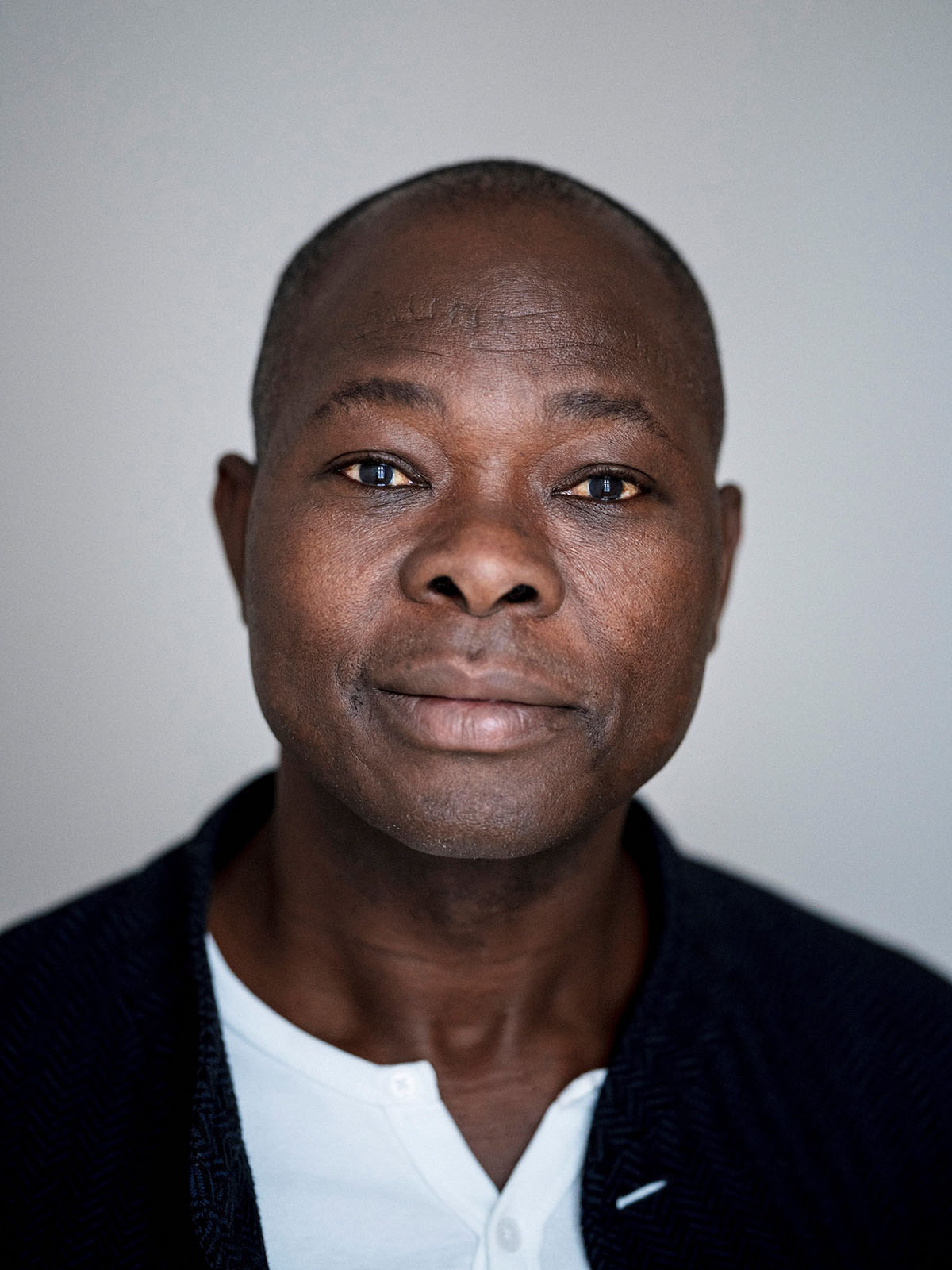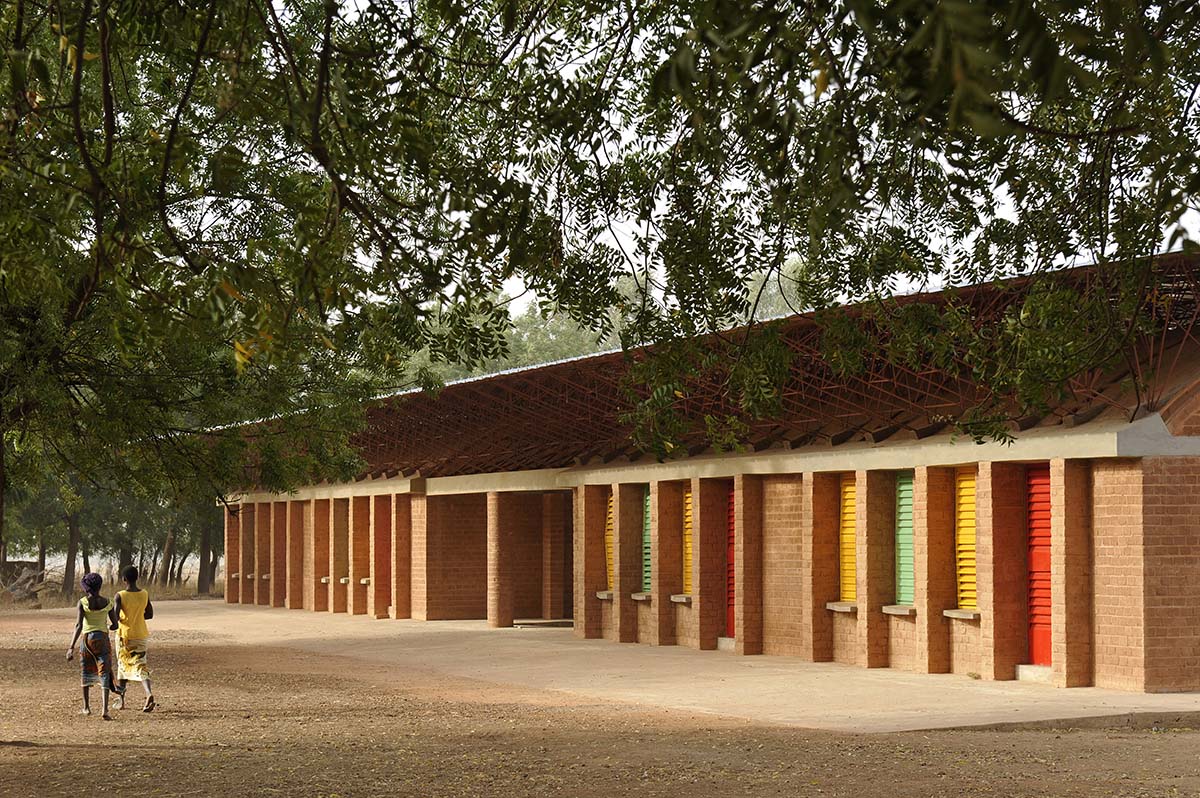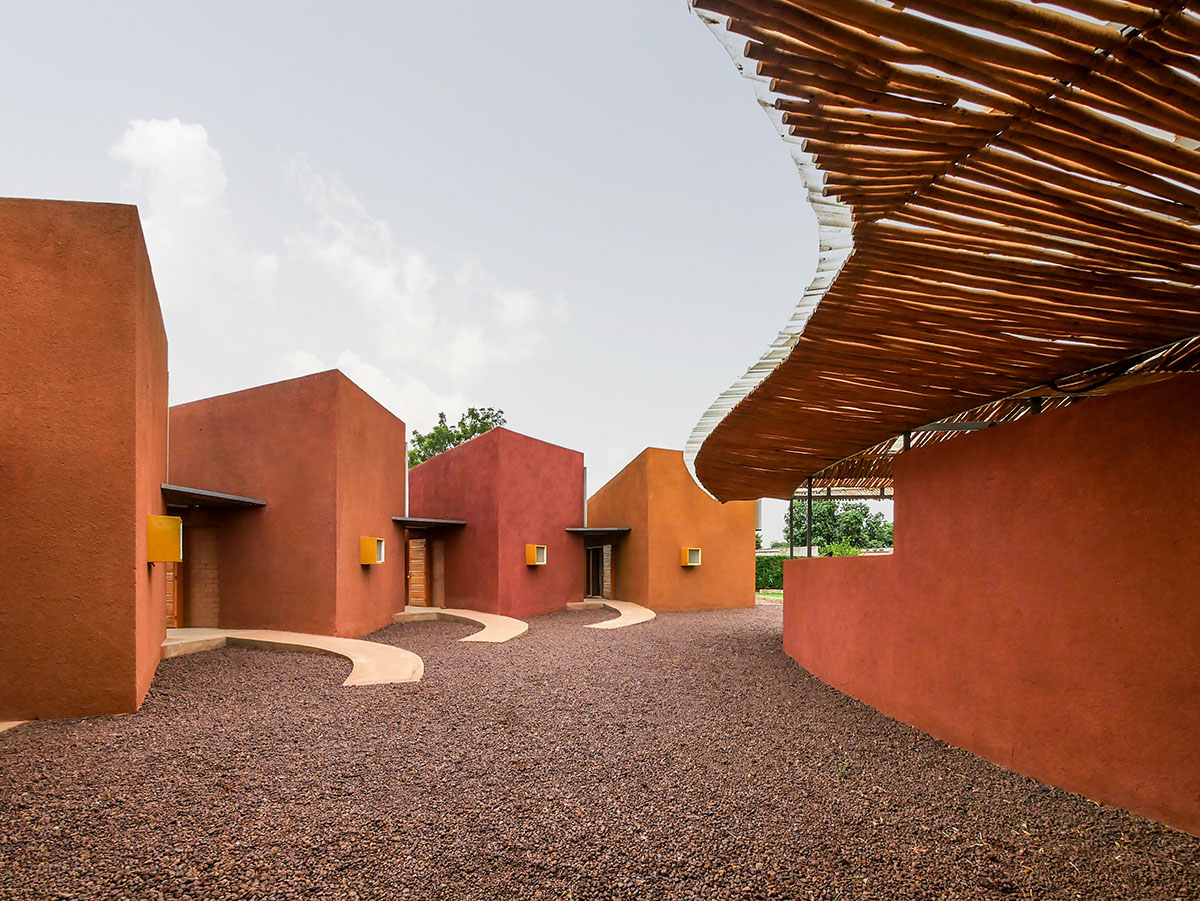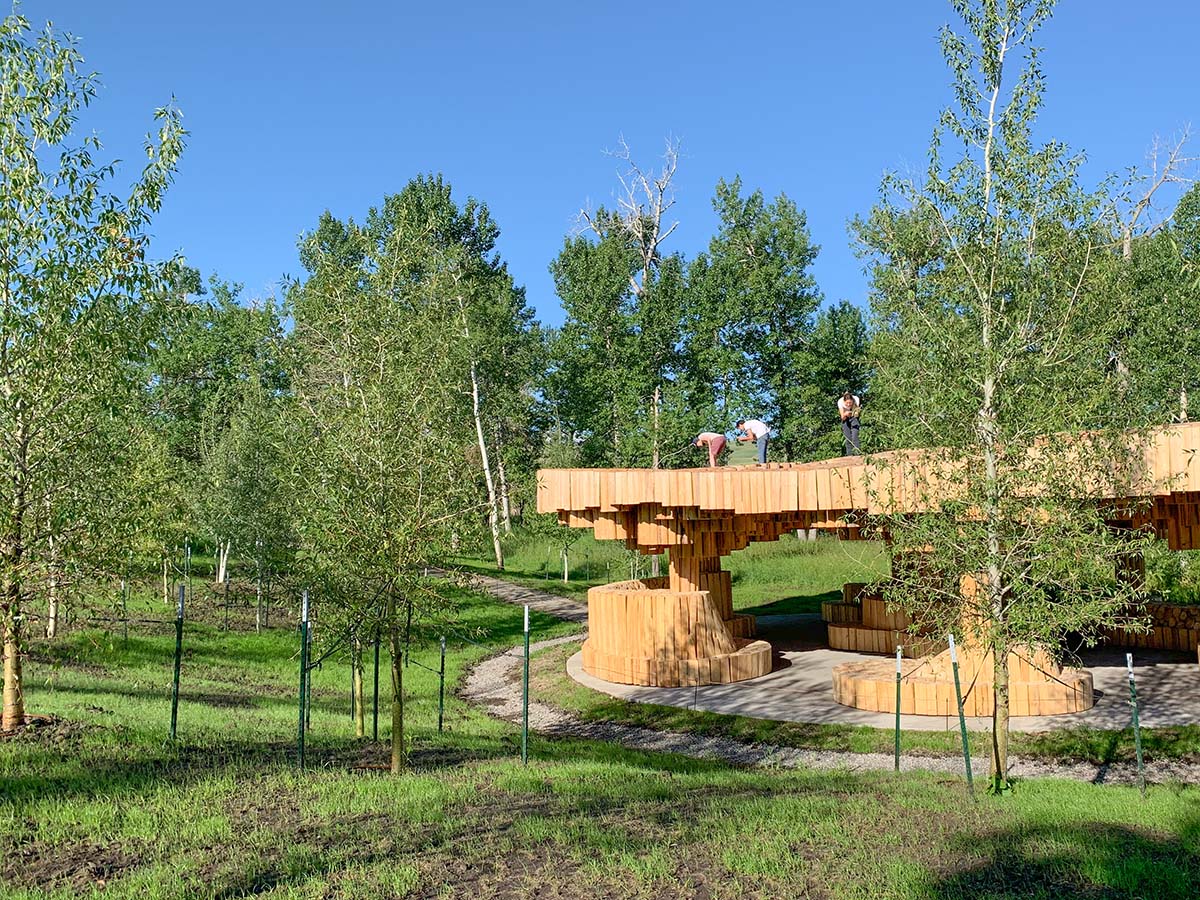Submitted by WA Contents
Francis Kéré wins the 2022 Pritzker Architecture Prize
Germany Architecture News - Mar 15, 2022 - 17:02 7320 views

Burkinese architect Diébédo Francis Kéré, principal and founder of Kéré Architecture, has been named as the recipient of the 2022 Pritzker Architecture Prize.
Born in 1965 in Gando, Burkina Faso, socially-minded architect Diébédo Francis Kéré is known for his using of local knowledge, locally-sourced materials and collaborative building processes that lead innovative construction methods in architecture.
Francis Kéré is the first African architect receiving this prestigious award since the prestigious Pritzker Architecture Prize was launched in 1979.
Kéré is the 51st Laureate of the Pritzker Architecture Prize, and is a dual citizen of Burkina Faso and Germany.
Francis Kéré was recognized for his entire body of work that "shows people the power of materiality rooted in place".

Gando Primary School. Photo courtesy of Erik-Jan Owerkerk
The Pritzker Prize stated that "his buildings, for and with communities, are directly of those communities – in their making, their materials, their programs and their unique characters."
"He knows, from within, that architecture is not about the object but the objective; not the product, but the process," stated the 2022 Jury Citation.
"He knows, from within, that architecture is not about the object but the objective; not the product, but the process," the jury explained.
He was born in Gando, Burkina Faso and his practice Kéré Architecture is based in Berlin, Germany, the architect known as Francis Kéré "empowers and transforms communities through the process of architecture."
Through his commitment to social justice and engagement, and intelligent use of local materials to connect and respond to the natural climate, he works in marginalized countries laden with constraints and adversity, where architecture and infrastructure are absent.
Building contemporary school institutions, health facilities, professional housing, civic buildings and public spaces, oftentimes in lands where resources are fragile and fellowship is vital, the expression of his works exceeds the value of a building itself.

Léo Doctors’ Housing. Photo courtesy of Francis Kéré
"I am hoping to change the paradigm"
"I am hoping to change the paradigm, push people to dream and undergo risk. It is not because you are rich that you should waste material. It is not because you are poor that you should not try to create quality" said Francis Kéré.
"Everyone deserves quality, everyone deserves luxury, and everyone deserves comfort. We are interlinked and concerns in climate, democracy and scarcity are concerns for us all."
The Pritzker added that "Francis Kéré is pioneering architecture - sustainable to the earth and its inhabitants - in lands of extreme scarcity."
"He is equally architect and servant, improving upon the lives and experiences of countless citizens in a region of the world that is at times forgotten,” comments Pritzker."
"Through buildings that demonstrate beauty, modesty, boldness and invention, and by the integrity of his architecture and geste, Kéré gracefully upholds the mission of this Prize," the Pritzker added.

Xylem Pavilion. Photo courtesy of Francis Kéré
His first built work was Gando Primary School built 2001 in Gando, Burkina Faso, which created the foundation for Kéré’s ideology - building a wellspring with and for a community to fulfill an essential need and redeem social inequities.
His response required a dual solution — a physical and contemporary design for a facility that could combat extreme heat and poor lighting conditions with limited resources, and a social resoluteness to overcome incertitude from within the community.
He fundraised internationally, while creating invariable opportunities for local citizens, from conception to vocational craftsmanship training. Indigenous clay was fortified with cement to form bricks with bioclimatic thermal mass, retaining cooler air inside while allowing heat to escape through a brick ceiling and wide, overhanging, elevated roof, resulting in ventilation without the mechanical intervention of air conditioning.
The success of this project increased the school’s student body from 120 to 700 students, and catalyzed Teachers’ Housing built in 2004 in Gando, Burkina Faso, an Extension built in 2008 in Gando, Burkina Faso and Library built in 2019 in Gando, Burkina Faso.
Kéré’s built works are located in Africa, in countries including the Republic of Benin, Burkino Faso, Mali, Togo, Kenya, Mozambique, Togo, and Sudan.

Lycée Schorge Secondary School. Photo courtesy of Francis Kéré
He designed pavilions and installations in Denmark, Germany, Italy, Switzerland, the United Kingdom and the United States.
The architect significant works include Xylem at Tippet Rise Art Centre in 2019, Montana, United States, Léo Doctors’ Housing built in 2019, Léo, Burkina Faso, Lycée Schorge Secondary School in 2016, Koudougou, Burkina Faso, the National Park of Mali in 2010, Bamako, Mali and Opera Village - Phase I, 2010, Laongo, Burkina Faso.
In 2017, he designed the Serpentine Pavilion in London, which takes its central shape from the form of a tree and its disconnected yet curved walls are formed by triangular indigo modules, identifying with a color representing strength in his culture and more personally, a blue boubou garment worn by the architect as a child.

Benin's new National Assembly building by Kéré Architecture. Image courtesy of Kéré Architecture.
His recent work, The Benin National Assembly in the country's capital Porto-Novon, is currently under construction and situated on a public park, is inspired by the palaver tree. Kéré Architecture recently completed an educational campus in Kenya.
The Jury's Citation continued that, "In a world in crisis, amidst changing values and generations, he reminds us of what has been, and will undoubtably continue to be a cornerstone of architectural practice: a sense of community and narrative quality, which he himself is so able to recount with compassion and pride. In this he provides a narrative in which architecture can become a source of continued and lasting happiness and joy."
Kéré established Kéré Foundation in 1998 to serve the inhabitants of Gando through the development of projects, partnerships and fundraising; and Kéré Architecture in 2005 in Berlin, Germany.
Read the full Jury Citation for the 2022 Pritzker Architecture Laureate Diébédo Francis Kéré:
What is the role of architecture in contexts of extreme scarcity? What is the right approach to the practice when working against all odds? Should it be modest and risk succumbing to adverse circumstances? Or is modesty the only way to be pertinent and achieve results? Should it be ambitious in order to inspire change? Or does ambition run the risk of being out of place and of resulting in architecture of mere wishful thinking?
Francis Kéré has found brilliant, inspiring and game-changing ways to answer these questions over the last decades. His cultural sensitivity not only delivers social and environmental justice, but guides his entire process, in the awareness that it is the path towards the legitimacy of a building in a community. He knows, from within, that architecture is not about the object but the objective; not the product, but the process.
Francis Kéré’s entire body of work shows us the power of materiality rooted in place. His buildings, for and with communities, are directly of those communities – in their making, their materials, their programs and their unique characters. They are tied to the ground on which they sit and to the people who sit within them. They have presence without pretense and an impact shaped by grace.
Born in Burkina Faso to parents who insisted that their son be educated, Francis Kéré went on to the study of architecture in Berlin. Over and over, he has, in a sense returned to his roots. He has drawn from his European architectural formation and work, combining them with the traditions, needs and customs of his country. He was determined to bring resources in education from one of the leading Technical Universities in the world back to his native land and to have those resources elevate the indigenous know-how, culture and society of his region.
He has continuously pursued this task in ways at once highly respectful of place and tradition and yet transformational in what can be offered, as in the primary school in Gando which served as an example to so many even beyond the borders of Burkina Faso, and to which he later added a complex of teachers’ housing and a library. There, Kéré understood that an apparently simple goal, namely, to make it possible for children to attend school comfortably, had to be at the heart of his architectural project. Sustainability for a great majority of the world is not preventing undesirable energy loss so much as undesirable energy gains. For too many people in developing countries, the problem is extreme heat, rather than cold.
In response he developed an ad-hoc, highly performative and expressive architectural vocabulary: double roofs, thermal mass, wind towers, indirect lighting, cross ventilation and shade chambers (instead of conventional windows, doors and columns) have not only become his core strategies, but have actually acquired the status of built dignity. Since completing the school in his native village, Kéré has pursued the ethos and the method of working with local craft and skills to elevate not only the civic life of small villages, but soon also of national deliberations in legislative buildings. This is the case of his two projects underway for the Benin National Assembly, in advanced construction, and for the Burkina Faso National Assembly, temporarily halted by the current political situation in the country.
Francis Kéré’s work is, by its essence and its presence, fruit of its circumstances. In a world where architects are building projects in the most diverse contexts – not without controversies – Kéré contributes to the debate by incorporating local, national, regional and global dimensions in a very personal balance of grass roots experience, academic quality, low tech, high tech, and truly sophisticated multiculturalism. In the Serpentine pavilion, for example, he successfully translated into a universal visual language and in a particularly effective way, a long-forgotten essential symbol of primordial architecture worldwide: the tree.
He has developed a sensitive, bottom-up approach in its embrace of community participation. At the same time, he has no problem incorporating the best possible type of top-down process in his devotion to advanced architectural solutions. His simultaneously local and global perspective goes well beyond aesthetics and good intentions, allowing him to integrate the traditional with the contemporary.
Francis Kéré’s work also reminds us of the necessary struggle to change unsustainable patterns of production and consumption, as we strive to provide adequate buildings and infrastructure for billions in need. He raises fundamental questions of the meaning of permanence and durability of construction in a context of constant technological changes and of use and re-use of structures. At the same time his development of a contemporary humanism merges a deep respect for history, tradition, precision, written and unwritten rules.
Since the world began to pay attention to the remarkable work and life story of Francis Kéré, he has served as a singular beacon in architecture. He has shown us how architecture today can reflect and serve needs, including the aesthetic needs, of peoples throughout the world. He has shown us how locality becomes a universal possibility. In a world in crisis, amidst changing values and generations, he reminds us of what has been, and will undoubtably continue to be a cornerstone of architectural practice: a sense of community and narrative quality, which he himself is so able to recount with compassion and pride. In this he provides a narrative in which architecture can become a source of continued and lasting happiness and joy.
For the gifts he has created through his work, gifts that go beyond the realm of the architecture discipline, Francis Kéré is named the 2022 Pritzker Prize Laureate.
Last year, Anne Lacaton and Jean-Philippe Vassal, founders of French architecture studio Lacaton & Vassal Architectes, have been named as the recipients of the 2021 Pritzker Architecture Prize.
The past laureates are Irish duo Yvonne Farrell and Shelley McNamara were named as the 2020 Laureate of the Pritzker Architecture Prize.
Previous winners include; Arata Isozaki (2019), Balkrishna Doshi (2018), RCR Arquitectes (2017), Alejandro Aravena (2016), Frei Otto (2015), Shigeru Ban (2014), Toyo Ito (2013), Wang Shu (2012), Kazuyo Sejima & Ryue Nishizawa (2010), Zaha Hadid (2004), Rem Koolhaas (2000), Norman Foster (1999).
Top image: 2022 Pritzker Prize Laureate Francis Kéré. Image © Lars Borges.
